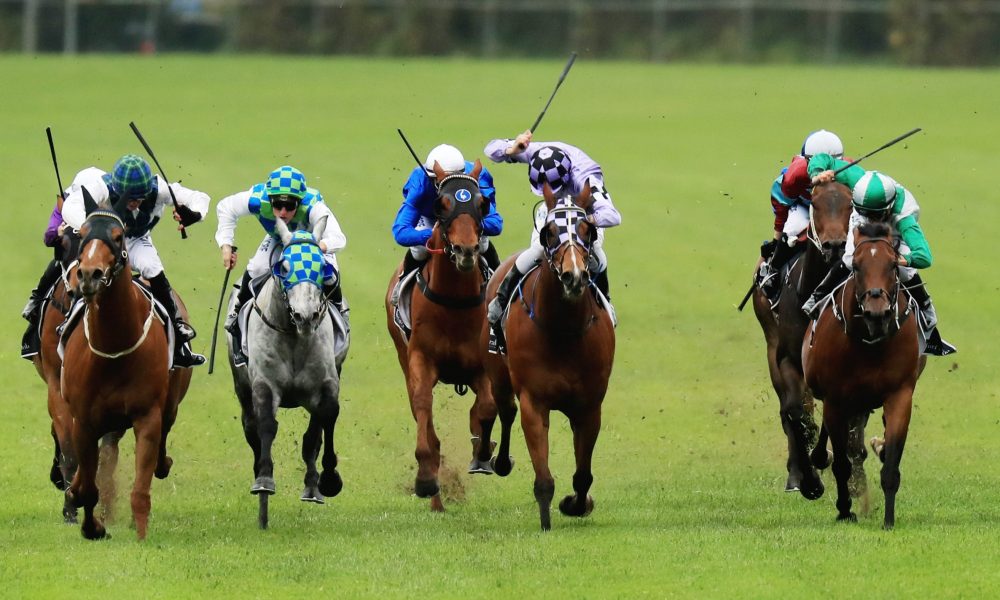It’s time to end the whip debate – and here’s how

When will the protracted and generally silly debate, reignited last week by Racing Victoria, over whip rules come to and end?
When the use of the whip is banned.
And that’s what should happen short of an independent study producing irrefutable evidence that it is necessary for the jockey’s safety. I’m not aware of such a study. I can scarcely recall seeing a jockey dramatically employ the whip as a safety tool.
Would an incredibly dangerous job be made significantly more perilous in the absence of a whip? Perhaps there are other measures which could be taken to make race riding safer but, historically, such notions have generally been paid lip service only by administrators.
As it is, the jockeys – certainly the best of them – are gradually phasing out the whip themselves. Take a look at Willie Pike on Perfect Jewel winning the Group 3 Cockram Stakes at Caulfield on 29 August.
The last race at Flemington last Saturday is also worth a look. September Run and Swat’s That finish full of running under hands and heels from their (fine) respective riders Craig Williams and John Allen.
Interestingly both draw the whip, in almost token fashion, when the race is all but over which I can only put down to force of habit or perceived expectation. A habit created, mostly, by trainers throwing kids on the chaff bag or mechanical horse with a stick in hand.
Proposed rule changes still hinge on a number of strikes which is patently absurd. Does one strike too many deserve sanction? What about two or three?
What about the jockey who brazenly flouts the rules in an Everest or Melbourne Cup and then produces the expert witness to declare the jockey suffers from dyscalculia?
Giles Thompson, CEO of Racing Victoria, last week said: “It is Racing Victoria’s view that progress on whip reform is needed now, and that the industry nationally, acting in its best long-term interests, should continue to work towards a prohibition on the use of the whip for purposes other than to protect the safety of horses and jockeys. It is critical that jockeys are permitted to carry a whip to ensure their safety, and jockey safety is something that we will always advocate.”
This stance is commendable but comes with, in the interim, another rule change based on the number of strikes.
Why not act now? Perhaps RV would charge me with not understanding the politics and the behind the scenes machinations of such a move.
I would counter with the fact that, in this extraordinary year, the maxim of “where there’s a will there’s a way” has never been better demonstrated than with the near instant application of social restrictions and economic support via packages such as Jobkeeper.
It is not the thin edge of the wedge. A ban of whips will not precipitate a raft of other changes. This is an issue which racing itself effectively created when it moved away from the long term “excessive use” ruling. It was not prompted by tens of thousands marching down the street.
This argument is just as irrelevant as the one which asserts the “new” whip doesn’t hurt – it just makes a noise. Well, mimic the noise. It’s all red herring stuff.
The simple facts are that, in this era, using the whip is an unacceptable look and rules based on number of strikes are unworkable.
Even the equestrian world is beginning to acknowledge there’s an appetite for change as was outlined, last year, in a report to the International Society for Equitation Science.
“You would be well removed from reality not to recognise that there is significant pressure for change and we’ve addressed that. To sit and do nothing would run the risk of decisions being made which would not be suitable to our members, or in our view, may not be in the best interests of the industry,” AJA chairman Des O’Keeffe told ANZ Bloodstock News last year.
O’Keeffe added that the Australian Jockey’s Association (AJA) was opposed to a wholesale ban on the use of the whip citing the whip “as a vital piece of equipment for any horse rider with regards to safety and appropriate encouragement.”
I would argue there is no longer such a thing as “appropriate” encouragement.
This debate, last year, saw prominent owner Lloyd Williams say “there is no place in the modern world for whips” and Giles Thompson asserted “I don’t see the whip being sustainable in the long term.”
Victorian Jockeys’ Association chief executive Matt Hyland, who said his association was not consulted before last week’s RV announcement, rebutted last year’s push for change saying: “Until you ride trackwork or in a race you have no idea how important they are to safely guide a horse.”
That may be fair enough but the whip’s use to “safely guide a horse” can now be its only acceptable use.


